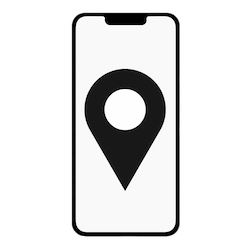Car Crashes in the United States Result in High Costs. In What Areas Do These High Costs Occur?
Beyond the immediate and apparent tragedy, car crashes in the United States have long-term economic consequences that ripple across multiple sectors. These consequences are not solely borne by the individuals involved in the accidents but impact society. This article delves into the multifaceted costs associated with car crashes in the U.S.
Medical Expenses
Arguably the most immediate and obvious expense, medical costs are a significant burden post-accident:
- Immediate Medical Care: From ambulance rides to emergency room visits, initial medical expenses can be staggering, particularly for severe injuries.
- Ongoing Care: Long-term injuries might require physical therapy, rehabilitation, surgeries, and medication, accumulating substantial bills over time.
- Uninsured Victims: Those without adequate health insurance face even more tremendous financial strain, potentially leading to debt or bankruptcy.
Property Damage and Repair Costs
Vehicle repair remains a prominent post-accident expense:
- Collision repair costs can vary depending on the severity of the damage and the vehicle’s make and model.
- Total vehicle loss means replacing the car, which can be financially draining.
Insurance Premiums

Car accidents, especially those where a driver is found at fault, can lead to increased insurance premiums:
- Insurers may raise rates for drivers involved in accidents, reflecting their higher perceived risk.
- The collective impact of accidents can also influence broader regional insurance rate adjustments.
Lost Productivity and Wages
Beyond the immediate aftermath, car accidents can have lasting impacts on victims’ ability to work:
- Those seriously injured might be unable to return to work, leading to lost wages or early retirement.
- Employers also face costs, including temporary replacements or overtime for other employees.
Legal and Administrative Costs
Legal battles stemming from accidents can be both time-consuming and expensive:
- Hiring attorneys, court fees, and other legal expenses can quickly add up.
- On the administrative side, police investigations, insurance claim processing, and other bureaucracies consume resources.
Emergency Services
Every accident, big or small, involves some level of response from emergency services:
- Police, firefighters, and emergency medical personnel all come at a cost, paid through public funds.
- Major accidents might divert resources from other critical areas, indirectly costing communities.
Long-term Socioeconomic Costs
The aftermath of serious accidents can result in broader socioeconomic implications:
- Victims might require social services or welfare, mainly if they can’t return to work.
- Families affected by fatalities or severe injuries might face economic hardships, impacting communities.
Infrastructure Repair and Improvements
Accidents, especially those due to infrastructure issues, can necessitate road repairs:
- Repairs might be needed for barriers, signs, or surfaces damaged in the crash.
- In areas with frequent accidents, larger infrastructure projects might be initiated to improve road safety, requiring public funding.
Conclusion
Car crashes in the U.S., though often viewed through the lens of personal tragedy, carry with them an economic weight felt across various sectors. From the immediate costs of medical care to the longer-term societal implications, it’s clear that the financial impact extends far beyond the accident scene. This economic perspective underscores the importance of continued investments in road safety, driver education, and vehicle technology to save lives and protect the financial well-being of individuals and society.
